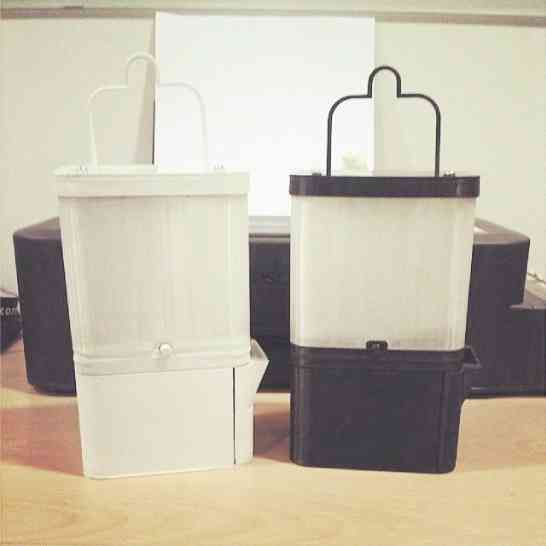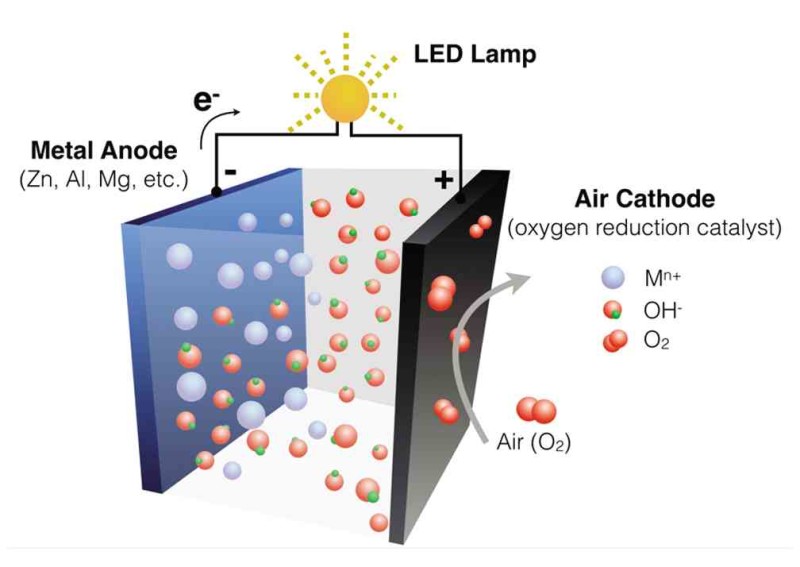SALt lamp: Issues, challenges, potentials
The threat of climate change and environmental destruction is bigger than ever, especially for developing countries like the Philippines. In the 2016 Climate Change Vulnerability Index, the country ranks 13th among 186 countries at risk from the impact of global warming.
Former US Vice President and Nobel peace laureate Al Gore, in a recent visit to Manila, called on the country to take a leadership role in helping the world shift its heavy reliance on coal to renewable energy, saying that building new coal-fired power plants is not smart.
Coal plants are among the biggest producers of greenhouse gases, particularly carbon dioxide, that cause global warming.
However, the Philippines still has 25 coal-fired power plants at various levels of construction and operation. Only 2 percent of the country’s energy comes from zero-emission sources, such as solar, wind and biomass, according to Gore.
The challenge is to find more sustainable energy sources to support our country’s growing demand for energy, while reducing our negative impact on our environment.
Buzz
A Filipino product causing buzz in the energy conversation is the Sustainable Alternative Lighting lamp, or SALt lamp. It was highly lauded during the Asia-Pacific Economic Cooperation (Apec) summit in November last year, particularly by US President Barack Obama. More importantly, it earned the attention of many Filipinos whom the product was designed for.
The SALt lamp is the brainchild of Aisa Mijeno, an engineer (along with her brother Raphael), who was inspired by members of the Butbut tribe in Kalinga who rely on kerosene lamps for their main source of lighting. Marketed as a “saltwater-powered” lamp, it easily showed promise as a sustainable alternative to old technologies.
But the SALt lamp is not without criticisms and challenges.
Amid questions about its real energy source and challenges in production and distribution, the Inquirer gathered the insights of two important voices in the discussion. One is Mijeno herself, SALt’s CEO and an engineering professor at De La Salle University in Lipa City in Batangas. The other is Joey Ocon, Ph.D., an electrochemical engineer and University of the Philippines Diliman professor, who specializes in metal-air batteries—the real energy source of the lamp.
How media reported
The SALt lamp made significant waves in the media due to its exposure during the Apec summit. Before that, it received little attention, except from international online publications focusing on start-ups and technologies.
On July 1, 2015, Core77, an online platform with industrial designers and students as its audiences, wrote about the SALt lamp, accompanied by an interview with Mijeno. She said it was the first to write about the product.
“We were supposed to be in stealth mode because we didn’t want to compromise, other than committing to people that we can deliver the lamp,” she said. Since Core77’s write-up, other similar stories have popped up without her knowledge, until the media attention caused by her guesting at Apec.
But the problem is not really with the exposure. It’s how the media reported it.
Several articles in local and international publications said the lamp “runs” or “is powered by” salt and water. The galvanic cell, particularly a metal-air battery, was rarely mentioned, when in fact it is the real energy source of the lamp.
Tech in Asia, an international online platform marketed to Asia’s technology community, even goes so far as saying, “The lighting system doesn’t require electricity, batteries or even fuel to run.” (This story was published in November 2014.)
Obama got it wrong
At the Apec summit, even Obama got it wrong by saying that SALt lamps “run on nothing more than saltwater.”
This is where Ocon finds a problem. He said that in several interviews about the lamp, Mijeno rarely mentioned the metal-air battery, a significant component of the product and therefore a crucial piece of information. Relying only on her statements, the media were quick to join the hype on a “saltwater-powered” gadget.
“She never says that there’s actually a battery,” Ocon said. “The product will lose its sexiness when she does. But the correct way of saying it is ‘we have a lamp powered by a battery that requires salt and water.’”
Similar products
Dating back to the 19th century, metal-air batteries are old technology. Commercially, they have been in production for almost a hundred years.
Products like toys and other lamps similar to SALt that use similar technology are already on the market. In the United States, a company called MetAir markets a “personal portable power system” with the same core technology, using zinc-air batteries as its energy source.
The MetAir power system is designed for emergency and off-grid power supply, with accessories such as waterproof LED lamp, AC power inverter, multiport USB charger and cigarette-lighter adapter.
Some toys using saltwater for metal-air batteries are even sold on Alibaba, an e-commerce company founded by Chinese businessman Jack Ma, who was onstage with Mijeno and Obama at the Apec meeting.
Saltwater as switch
Saltwater does not produce the electricity necessary for the SALt lamp and similar products to function. Saltwater acts only as an electrolyte to facilitate the flow of electrons within the battery.
“Saltwater closes the circuit. It’s like an on-and-off switch,” Ocon said. (See infographic.) When the circuit is closed, electrons are generated with the oxidization of a metal anode, which needs replacing every six months due to corrosion.
Besides saltwater, other electrolytes, such as vinegar or even urine, with enough ions to light the product could be used, Ocon said.
However, Mijeno chose to focus on salt and water, as she found out that these were two of the three staple items in Filipino households, the third one being rice. The two are cheap and easy to obtain, and for coastal communities, these are basically free.
Sadly, there is not much emphasis on this core technology in media reports.
Possible misconception
With regard to the possible misconception on the product, Mijeno said she did not have control over the articles being published.
“It’s hard to correct because there are already so many publications,” she said. “We just don’t focus our efforts on it anymore because we still have so much to do for our product.”
Mijeno said she felt there was too much exaggeration on the saltwater part, noting that similar products are marketed the same way. She alluded to a vehicle, which she said would not run without fuel or gas.
“Same thing with the SALt lamp. It would not run without an electrolyte,” she said.
Mijeno said the simplification of the terms was intentional. “The reason why we’re using (these terms) is to simplify … because our target is not really the urban people,” she said, “but [people from] rural communities who didn’t even finish elementary, or have no idea about electrodes, anodes…”
Still, Ocon said that it wasn’t mere simplification as it was incorrect to say that the lamp was “saltwater-powered.”
Patent issue
Since metal-air batteries are old technology, how do Mijeno’s group plan to have it patented?
A patent is a “grant issued by the government … (that is) an exclusive right granted for a product, process or an improvement of a product or process, which is new, inventive and useful,” says the Intellectual Property Office of the Philippines.
Patents are significant in safeguarding the inventor’s rights to the use and sale of his patented product. While it is not necessary for production and marketing, it is important in guaranteeing a product’s value on the market.
There are three criteria for patentability: novelty, inventive step and industrial capability.
For Ocon, the SALt lamp is not an invention because the core technology is an old and open science.
Mijeno, however, argued that she herself called the product an innovation. She said the media nevertheless had been dubbing it an “invention.” Various media reports have also called her an inventor.
“Since it’s a new tech for us (Filipinos), they called it an ‘invention,’” she said. “(But) our innovation is that our electrode can last longer.”
Mijeno said her team had applied for different patents: First, the core technology, which is on the gas diffusion electrode for the system; second, the schematic circuitry developed for the LED lamp and the USB charging port; and third, for its utility and industrial design.
These are pending but she said her group was willing to roll out the product this year even without a patent. The team also has applied for patents in Singapore.
Challenges in production
Beyond its core technology and patent applications, the next challenge for the lamp is production.
An integral component of SALt’s system is the metal anode, which corrodes over time and when in contact with saltwater. Because it is disposable and must be replaced (every six months, according to the SALt website), Ocon said the supply chain for metal anodes may be an issue.
“The concentrate might come from the Philippines, but the metal will most likely be from China,” Ocon said.
Mijeno said her group had already partnered with a local company based in Laguna Technopark in Biñan, which she refused to disclose for now. However, she assured the public that the company had the right permits to manufacture the product in accordance with environmental laws.
In terms of distribution of the anodes to far-flung areas, she said her team had partnered with Unilever. In other interviews, she said her group planned to have the consumable anodes in sari-sari stores all over the country.
Sustainability
Because the metal anodes corrode over time, waste management can become an issue.
“Metal is a limited resource. You would want to recycle,” Ocon said.
Metal ores are resources that cannot be replenished by natural means, similar to fossil fuels.
In response, Mijeno said recycling was possible through a project in certain communities that would receive the lamp.
“After using the lamp, there will be a lump of metal,” she said. “You can still use it, melt it out and produce another consumable for the lamp.”
She said the possible project could generate employment in the communities. “There will be communities that will gather up the consumable to be delivered to our site in Biñan, which we will be able to recycle into a useful anode system.”
Yet, the manufacturing and recycling of metals and the process by which they will be transported are energy-intensive and can be unsustainable. These can generate a huge carbon footprint with the usage of fossil fuels for manufacturing and the carbon emissions in the transport.
However, Mijeno said there was no manufacturing process that was carbon emission-free.
“You have to just choose the manufacturing process that emits less carbon,” she said, adding that manufacturing solar cells is not also completely free of carbon footprints. “The thing is choosing less.”
Benefits
Despite the challenges faced by the SALt lamp, the question still boils down to whether this innovation can be used by Filipinos.
During her onstage appearance at the Apec summit, Mijeno said: “Just imagine, if we’re able to power a whole island using ocean water.”
For Ocon, the SALt lamps still cannot be relied on for daily usage, especially with the corrosion of the metal that needs replacing every now and then.
“(It’s) not for everyday lighting, but for emergencies … It’s a fancy product,” he said, adding that it is still expensive compared with other sustainable technologies, such as solar power.
“Ecologically designed is questionable when your target is daily lighting,” he said. “It’s very convenient for emergencies … (when) the goal is for the lamp to last a couple of days.”
But Mijeno said her team had already conducted tests proving that the product could last eight hours daily for six months, if used “with proper maintenance.”
“If you’re not using the lamp, you drain out the saltwater because the chemical reaction is continuous,” she said. The saltwater, she added, could be stored in a container and reused again.
Conversation starter
At this stage, the lamp can either function as a lamp or as a charging port, and not at the same time. The charging process through the USB port also takes hours.
Mijeno said her group was continuously developing the prototype. It is still looking for financial backers.
She said innovations should not be limited to experts. “As innovators, they should support us and help us improve the product.”
In numerous interviews, Mijeno has said that a support system from both the government and the private sector is very much welcome for the product, and necessary to encourage other people to be innovators.
Despite the issues and challenges, the SALt lamp still holds potential. It may not be the perfect product that can bring the best lighting solutions to off-grid communities, but it is an innovation that has promise.
Right now, it is prime time to take advantage of its popularity to start an important conversation. While the SALt lamp sparks discussions among scientists, inventors and innovators, it should also ignite the interest of other Filipinos, especially the youth, in science and technology. That is where the real challenge and potential lie.























